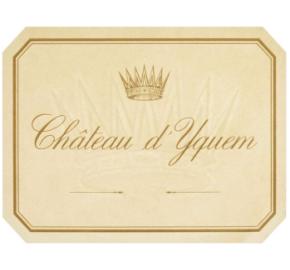
Chateau d'Yquem 1996
- Producer Chateau d'Yquem
- Blend 100% White Bordeaux Blend
- Country France
- Region Bordeaux
- Appellation Sauternes
- UPC 0 15643 60058 6
Tasting Notes
The nose is concentrated and incomparably pure with classic fruit aromas (apricot, fig, and quince) as well as strong citrus overtones (grapefruit). The bouquet also has strong floral elements, which is rather unusual, as well as oak nuances (vanilla and toast).
The nose is altogether complex, subtle, and elegant.
The wine stars off very round and soft on the palate, developing great balance and purity.
This is a perfect Yquem, in no way excessive or overwhelming, but lacking nothing, including a long aftertaste. It is extremely attractive and approachable now, even though its ageing potential is virtually unlimited.
This wine is assured of a great future, and will remain a benchmark for many years to come. A must.
Vintage 1996
Can be enjoyed as of now.
Harvest
This encouraged slow, complete ripening. Spared the ravages of premature rot thanks to low temperatures, the grapes were very healthy and had excellent acidity.
As rain was expected, we picked a small quantity of very early-ripening grapes on September 16th and 17th. This proved to be a wise decision because it then proceeded to rain until October 2nd.
The rain helped propagate botrytis in a big way throughout the vineyard even though the grape skins at this time were somewhat hard due to the dryness and cold.
It stopped raining on October 3rd and minimum temperatures dropped (6 days at 5 Celsius), but the highs were over 25 Celsius. All the right conditions were combined for noble rot to spread; warm temperatures during the daytime to concentrate the juice and cool evenings to stop the microscopic fungus from spinning out of control.
The grapes were soon ready to be harvested and the first wave of picking lasted from October 3rd to the 9th. The second wave started on the 7th and the third on the 11th.
The dry, cold weather fostered the steady, manageable development of botrytis, enabling teams of pickers to set out every 4-5 days depending on the progress of noble rot in each vineyard plot.
Ten mm of rain fell in mid-October. This gave rise to a new burst of botrytis, which had begun to run out of steam by that time. The following two weeks of dry weather provided the opportunity for a fourth, fifth, and even the beginning of a sixth wave of picking lasting until October 24th.
Thanks to stable weather conditions, the grapes could take their time ripening, making this a real "textbook vintage" at Chateau d'Yquem.
Workers could pick at their leisure during each wave (the second and third lasted three weeks, the fourth and fifth, two weeks) with several different waves taking place at the same time. In 1996, we blended grapes from 4 or 5 different waves, all picked on the same day, on 10 occasions.
We finished picking on the evening of October 24th.
There were almost no grapes left on the vines. Seeing as the weather was still quite fine we were able to end the sixth and last wave on November 4th and 5th.
The final blend was excellent, a truly representative cross section of all the estate's vineyard plots. This was possible because botrytis developed equally throughout the vines. In fact, nobel rot was exceeding pure and healthy in 1996.
Weather Conditions
August was very stormy (twice the average rainfall), which helped build up good reserves of water in the soil.
